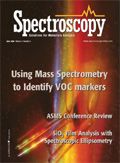End of the Spectrum: A 3D Look at Alzheimer's Disease
A new imaging technique based on MRI scans lets researchers study brain structure changes in early stages of the disease.

By the time a person starts showing symptoms of Alzheimer's disease, they have lost 15 percent of their brain matter. As the disease gradually strips away more and more brain cells, drugs become powerless against its onslaught. With brain imaging, doctors detect subtle changes in the brain's structures in the initial stages of Alzheimer's so that people at a high risk of developing the disease can be treated as early as possible.
Researchers have developed a new 3D imaging procedure to see detailed changes in the hippocampus—a brain area critical to memory that is hit early in Alzheimer's—due to mild cognitive impairment (MCI), considered widely to be an early stage of Alzheimer's. "What we saw was extreme devastation of the hippocampus," says Paul Thompson, a neurologist at the University of California, Los Angeles (Los Angeles, CA), where the imaging method was developed.

Three-dimensional brain maps show the progression of Alzheimerôs disease. Similar maps of the hippocampus show deterioration in the diseaseôs early stages. Courtesy Paul Thompson, UCLA.
People with the amnesic subtype of MCI, known as MCI-A, suffer only from a memory deficit. On the other hand, those with the multiple cognitive domain subtype (MCD) may or may not have memory difficulties, but are impaired in other processes such as language or judgment. People with either form of MCI have a five times higher risk of developing Alzheimer's than normal individuals, Thompson says.
In a study published in the January issue of Archives of Neurology, Thompson and his colleagues from the University of Pittsburgh School of Medicine (Pittsburgh, PA) used high-resolution MRI scans to create 3D maps of the hippocampi of 66 individuals. Of these, 20 had Alzheimer's, 20 had MCD, six had MCI-A, and 20 were healthy. In people with MCI-A, the hippocampus had shrunk 14 percent, nearly as much as those with Alzheimer's, while people with MCD had shrinkage of only five percent.
"So we can see that the pathway from MCI to Alzheimer's does not require the catastrophic hippocampus atrophy that we see in Alzheimer's," says James Becker, a neuropsychologist at the University of Pittsburgh and lead author of the study. Also, the results show that there are two pathways for the brain to go from the normal to the diseased stage.
The new imaging technique is a step up from previous methods, which gauge hippocampus deterioration through volume loss. "[The new method allows us] not only to get a measure of total volume, but also to see where the atrophy is happening," he says.
Researchers still don't understand why Alzheimer's disease is selective in the way it attacks the brain. It begins in the memory areas and spreads slowly and systematically to the other areas over a period of two to three years. "We really don't know why there should be a sequence," Thompson says. "Why would a disease ravage certain areas but leave vision and hearing completely untouched?" The 3D maps could help unravel this mystery because they give a detailed picture of exactly where the brain is losing even the smallest amount of tissue and how the loss is spreading.
Monitoring the spread requires frequent brain scans to create the 3D maps. This is possible with MRI and not PET scanning, an older and more sensitive technique, Thompson explains, because it is safe to take MRIs more frequently. While PET scans are safe if taken once or twice a year, a person can get an MRI scan once every three months. This is especially useful in Alzheimer's drug trials, where scientists want to measure disease progression and see where in the brain a drug is working. "People are really using MRI in a way to make a time-lapse movie of brain changes," he says.
Advances in using MRI to understand Alzheimer's, such as the 3D technique, have been possible because of "the marriage between MRI technology and computer science," says John Csernansky, director of the Silvio Conte Center for Neuroscience Research at the Washington University in St. Louis (St. Louis, MO). With computers, researchers can analyze MRI scans in novel ways and get more information about which parts of the brain is changing at what rate.
Csernansky's research group uses an imaging method very similar to the one at UCLA to study various parts of the brain for signs of Alzheimer's. The technique is limited to research, he says, but it would be advantageous for routine use, for which they hope to make it more precise and automated.
Prachi Patel-Predd
Assistant Editor, Spectroscopy

New Study Provides Insights into Chiral Smectic Phases
March 31st 2025Researchers from the Institute of Nuclear Physics Polish Academy of Sciences have unveiled new insights into the molecular arrangement of the 7HH6 compound’s smectic phases using X-ray diffraction (XRD) and infrared (IR) spectroscopy.
A Seamless Trace Elemental Analysis Prescription for Quality Pharmaceuticals
March 31st 2025Quality assurance and quality control (QA/QC) are essential in pharmaceutical manufacturing to ensure compliance with standards like United States Pharmacopoeia <232> and ICH Q3D, as well as FDA regulations. Reliable and user-friendly testing solutions help QA/QC labs deliver precise trace elemental analyses while meeting throughput demands and data security requirements.